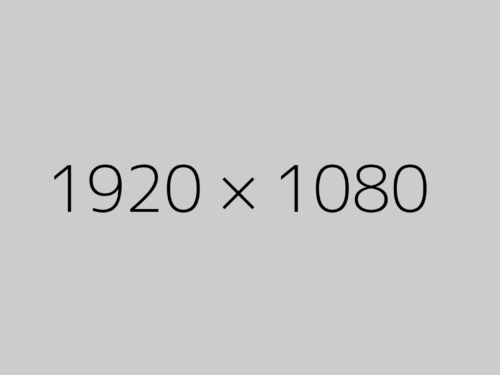Intro
The resonant cavity of a magnetron is a hollow chamber that is used to produce and amplify electromagnetic waves at microwave frequencies. The resonant cavity is typically made of a metallic material and is designed to resonate at a specific frequency that is determined by its geometry and dimensions.
The resonant cavity of a magnetron contains a cathode, an anode, and a magnetic field that is generated by a set of permanent magnets or an electromagnet. When a voltage is applied between the cathode and anode, electrons are emitted from the cathode and accelerated towards the anode by the electric field.
As the electrons move through the resonant cavity, they are subjected to the magnetic field, which causes them to spiral around the cavity and emit microwave radiation. The resonant cavity is designed to support standing waves of microwave radiation, which are amplified by the interaction between the electrons and the magnetic field.
The resonant cavity of a magnetron is an essential component of the device and determines its operating frequency, power output, and efficiency. The geometry and dimensions of the resonant cavity can be adjusted to optimize these parameters for specific applications.
Design
The math behind designing a resonant cavity for a magnetron involves determining the resonant frequency and mode of the cavity, as well as optimizing its dimensions and geometry to achieve the desired performance characteristics.
The resonant frequency of the cavity is determined by its dimensions, shape, and material properties. The resonant frequency can be calculated using the formula:
f = c / (2 * L * sqrt(εr))
where f is the resonant frequency, c is the speed of light, L is the length of the cavity, and εr is the relative permittivity of the material inside the cavity.
Once the resonant frequency is known, the next step is to determine the resonant mode of the cavity. The resonant mode refers to the pattern of standing waves that are set up inside the cavity at the resonant frequency. The resonant mode can be calculated using electromagnetic simulation software or by solving the Maxwell’s equations for the cavity geometry.
The dimensions and geometry of the cavity can then be optimized to achieve the desired performance characteristics, such as power output, efficiency, and bandwidth. This involves adjusting the cavity dimensions and shape to ensure that the electric and magnetic fields are properly distributed within the cavity to maximize the interaction between the electrons and the electromagnetic field.
The design process of a resonant cavity for a magnetron can be complex and iterative, involving simulations, modeling, and experimental testing to refine the design parameters and achieve the desired performance characteristics.
Kirchoff’s Law
Kirchhoff’s laws are a set of fundamental principles that are used to analyze electrical circuits. In the context of a magnetron, Kirchhoff’s laws can be applied to calculate the energy in amps and magnetic field strength required to spin the electrons in the resonant cavity.
Kirchhoff’s current law states that the total current flowing into a node in an electrical circuit must be equal to the total current flowing out of the node. In the case of a magnetron, the cathode of the resonant cavity emits a stream of electrons that flow towards the anode. Kirchhoff’s current law can be applied to calculate the total current flowing through the resonant cavity.
Kirchhoff’s voltage law states that the total voltage around any closed loop in an electrical circuit must be zero. In the case of a magnetron, the voltage applied between the cathode and anode of the resonant cavity accelerates the electrons towards the anode. Kirchhoff’s voltage law can be applied to calculate the voltage required to achieve a specific energy level for the electrons.
Calculation
In a magnetron, the cathode emits a stream of electrons that are accelerated towards the anode by a high voltage. The electrons travel through a resonant cavity that is formed by a cylindrical metal structure with a central cathode and a surrounding anode. As the electrons pass through the resonant cavity, they are subjected to a magnetic field that causes them to spiral around the axis of the cavity. This spiral motion causes the electrons to emit microwave radiation that is extracted from the cavity by a waveguide.
To calculate the required voltage and current in the cathode and anode of the magnetron, we can use Kirchhoff’s voltage law in combination with the equation for the electron energy:
E = qV
where E is the energy of the electron, q is the charge of the electron, and V is the voltage applied between the cathode and anode.
If we assume that the voltage applied between the cathode and anode is constant, then Kirchhoff’s voltage law can be used to write an equation for the total voltage drop around the closed loop formed by the cathode and anode:
V = Vcathode + Vresonator + Vanode
where Vcathode is the voltage drop across the cathode, Vresonator is the voltage drop across the resonant cavity, and Vanode is the voltage drop across the anode.
Assuming that the resonant cavity is perfectly tuned, the voltage drop across the resonator can be neglected, and we can write:
V = Vcathode + Vanode
Using the equation for electron energy, we can express the current flowing through the cathode and anode in terms of the applied voltage:
Icathode = Jcathode x A = qncathode x A x sqrt(2qVcathode / m)
I = J x A = qn x A x sqrt(2qVanode / m)
where Icathode and I are the currents flowing through the cathode and anode, respectively, Jcathode and J are the current densities, A is the cross-sectional area of the cathode and anode, n is the number of electrons emitted per unit time by the cathode, m is the mass of the electron.
By combining the equations for the total voltage and the currents in the cathode and anode, we can solve for the required voltage and current in the cathode and anode:
V = Vcathode + Vanode
Icathode = qncathode x A x sqrt(2qVcathode / m)
I = qn x A x sqrt(2qVanode / m)
These equations show that the required voltage and current in the cathode and anode depend on the current density, cross-sectional area, and electron emission rate of the cathode, as well as the mass and charge of the electron. The voltage and current can be adjusted by varying the voltage applied between the cathode and anode, or by adjusting the geometry and materials of the cathode and anode.
Lorentz Force Law
The Lorentz force law is a fundamental principle of electromagnetism that describes the force experienced by a charged particle moving through a magnetic field. In the context of a magnetron, the Lorentz force law can be used to calculate the magnetic field strength inside the resonant cavity that is required to spin the electrons.
To calculate the magnetic field strength required to spin the electrons in the resonant cavity, the Lorentz force law can be used. The Lorentz force law states that a charged particle moving through a magnetic field experiences a force that is perpendicular to both the velocity of the particle and the direction of the magnetic field.
In the case of a magnetron, the magnetic field in the resonant cavity is generated by a set of permanent magnets or an electromagnet. The Lorentz force law can be applied to calculate the magnetic field strength required to spin the electrons in the cavity.
Calculation
The Lorentz force law is given by:
F = q(E + v x B)
where F is the force experienced by the charged particle, q is the charge of the particle, E is the electric field, v is the velocity of the particle, and B is the magnetic field.
In the case of a magnetron, the charged particles are the electrons moving through the resonant cavity. The magnetic field is generated by a set of permanent magnets or an electromagnet, and is directed perpendicular to the direction of electron motion.
To calculate the magnetic field strength inside the resonant cavity required to spin the electrons, we can use the Lorentz force law in combination with the equation for the centripetal force:
F = mv^2 / r
where m is the mass of the electron, v is the velocity of the electron, and r is the radius of the circular path that the electron follows.
If we assume that the electron is moving in a circular path in the resonant cavity, and that the magnetic field is perpendicular to the direction of electron motion, then we can equate the Lorentz force and the centripetal force:
q(vB) = mv^2 / r
Solving for the magnetic field strength, we get:
B = (mv) / (q r)
where B is the magnetic field strength, m is the mass of the electron, v is the velocity of the electron, q is the charge of the electron, and r is the radius of the circular path that the electron follows.
This equation shows that the magnetic field strength required to spin the electrons in the resonant cavity depends on the velocity and radius of the circular path, as well as the mass and charge of the electron. The magnetic field strength can be adjusted by varying the current or the number of turns in the electromagnet, or by adjusting the position and orientation of the permanent magnets.




Comments
No Comments